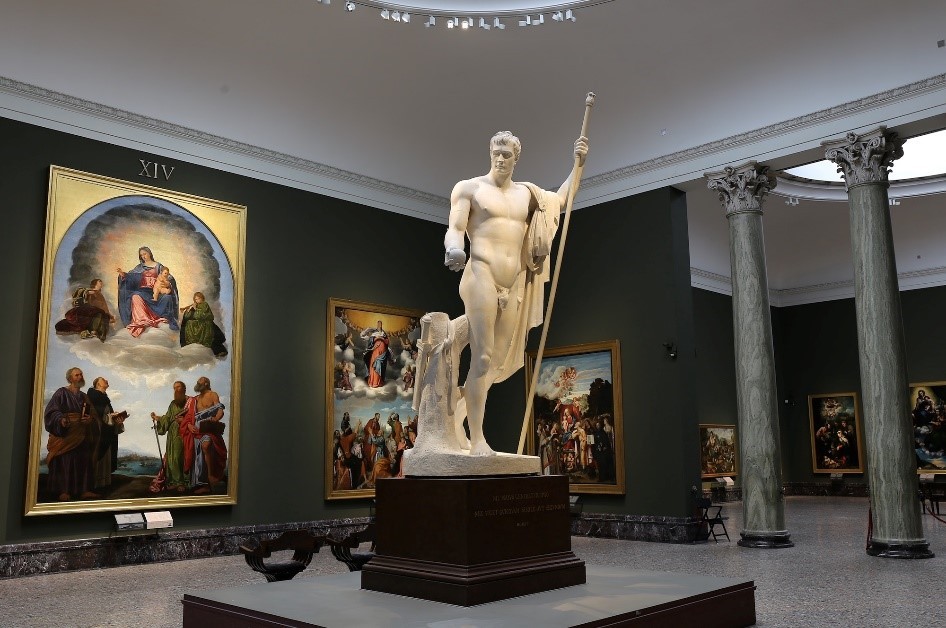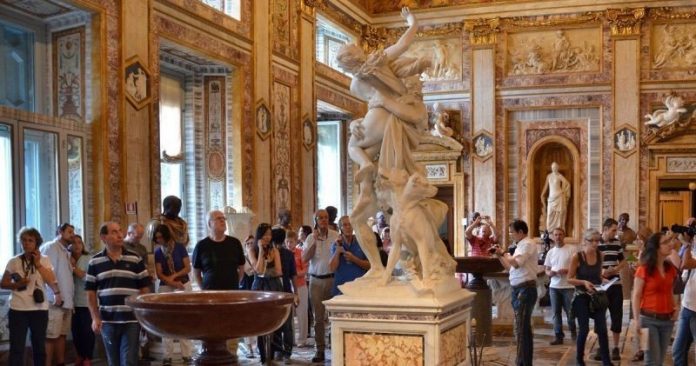Italian museums are starting to reopen on 18.05.2020 after the government has provided €55 billion as a support line.

These museums have received a financial blow over the last 70 days of closure, but the government promptly threw them a lifeline of €55 billion included in the national spending package. Over the weekend, better news has come out. Museums have been announced that they could be reopened from 18.05.2020, and on the last Saturday (16.05.), in the evening, the Culture Minister Dario Franceschini gave a green light.
However, Milan’s intention to reopen its civilian museums from Monday has been dashed at the last minute. Lombardy’s President Attilio Fontana blocked the minister’s decision to open the museums on Saturday but fortunately changed his mind after negotiations with other regional presidents on the same evening, reports the Corriere della Sera.
The Capitoline Museums of Rome and Turin’s Castello di Rivoli will open today, on May 19th and the City Museums of Venice will start their work this weekend, but the financial void of €190 million in the Treasury of Florence means that the city cannot afford to open its civilian museums nowadays. Among the national galleries with special autonomy, the Naples’s Museo e Real Bosco di Capodimonte and the Rome’s Galleria Borghese open from the 18th and 19th of May accordingly. Both the Pinacoteca di Brera in Milan will lose more than €2 million in lost revenue in 2020, says the director James Bradburne to The Art Newspaper, and the Uffizi Gallery in Florence is expected to announce a schedule for the opening during the upcoming days.
Along with standard security measures including online ticketing, social distancing,

thermoscanning, and mandatory hand washing, the Uffizi will use its queue reduction algorithm to regulate the flow of visitors, says Eike Schmidt in an interview with The Art Newspaper.
The expected decrease in the number of visitors, which will lead to further losses in ticket sales, means that Decreto Rilancio is a temporary phenomenon. The measures provided for in the current regulation include the establishment of an emergency fund of €210 million to support bookstores, publishing companies and art organizations, to cover the costs of canceled events and exhibitions, €100 million to support the activities of state museums in case of loss of tickets and €100 million from the Cultural Fund, which provides long-term loans to cultural enterprises for investments in various physical structures and cultural activities in 2020-21.

The fund was created on the basis of an appeal by journalist Pierluigi Battista, in the Corriere della Sera on 26 March. Last week, Umberto Croppi, the director of the Federculture group told to the Artribune that the fund would be a useful financial mechanism, but regretted that it would be used to make investments and not to provide much-needed liquidity right now.
The fund is likely not to be large enough to cover the entire segment, Federculture President Andrea Cancellato said yesterday at the Corriere. Meanwhile, museum directors are waiting for the formalization of this decree to find out clearly what benefits it will bring to them. According to Schmidt, in Italy “more than 470 state museums that [do not] receive enough income to cover their expenses” are more likely than the profitable Uffizi to benefit. Large museums like the Uffizi, which has already recorded more than €10 million in losses, “have broad enough shoulders to take a hit,” he earlier told to the l’Espresso.
The mentioned above interviewees said that a pause occurred was a chance to rethink the

basic financial and organizational schemes. Sylvain Bellenger, the director of Capodimonte, says “public and private organizations are obligated to work with each other for the future of society.” Bradburne claims that the operating costs of museums are “cut to the bone”, but that the Brera Gallery will at the same time strive not to increase its dependence on public funds. Reducing the number of visitors is “not necessarily bad,” he says. “I do still remember the world before the advent of mass tourism and overcrowding of museums.”

























